 Features
Features

In the field of Việt Nam’s reliefs, Trần Nguyên Đán is a well-known name. His devotion and tireless creative abilities have earned him significant success and renown in domestic fine arts.
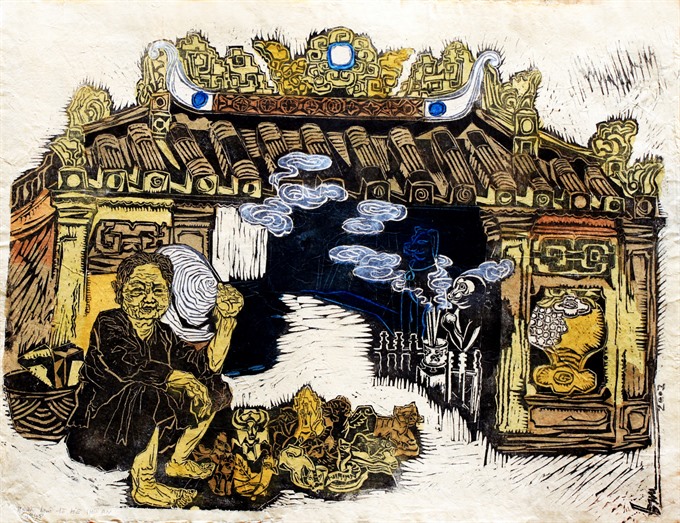 |
| Traditional scene: The relief artwork The artisan who makes tò he at Cầu Bridge - Hội An by artist Trần Nguyên Đán. — VNS Photo Đoàn Tùng |
by Sơn Tùng and An Vũ
In the field of Việt Nam’s reliefs, Trần Nguyên Đán is a well-known name. His devotion and tireless creative abilities have earned him significant success and renown in domestic fine arts.
Đán’s vintage house, tucked away in an alley on Khương Trung Street, is a miniature version of an art studio, with enlarged reliefs placed around the room. At 77, he looks like he does not let time stop him from doing what he loves.
Seeing fine art as a source of joy in life, he has been quietly making reliefs for the last 15 years of his retirement.
Đán was in the first generation to graduate from the University of Industrial Fine Arts, and for the last 50 years he has held many important positions, though his love for making reliefs remains the same.
Back in the 19th century, the appearance of the first printers killed the need to print books by handicraft wood carving techniques in Việt Nam. However, the nature of art is in its development and creation. It never fades away. Not only has it been given strength and been provided with a source of life, this traditional technique is also creatively applied in modern art and relief painting.
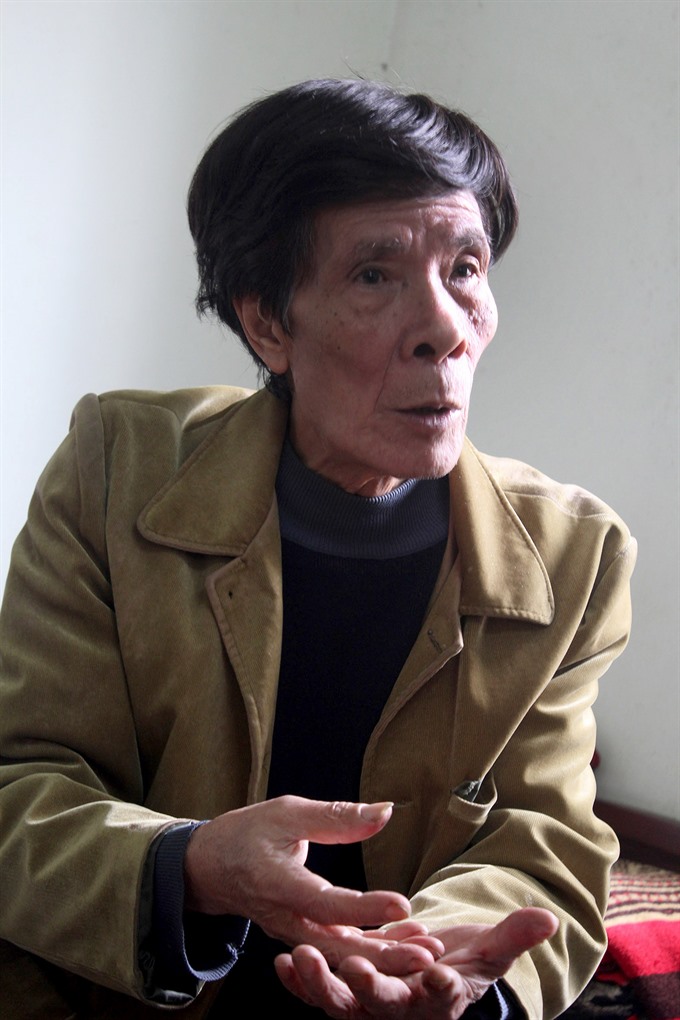 |
| Devoted: Artist Trần Nguyên Đán. — VNS Photo Đoàn Tùng |
In order to create a beautiful relief artwork, Đán said the most challenging thing is looking for the idea and how to craft different aspects of the relief.
“First, the idea will be sketched on paper, and then crafted in relief. When the sketch is completed, the artist uses carbon paper to manually print the pattern onto the wood surface,” Dan said.
"Next is the process of wood carving, which is considered to be the most time consuming work. Once finished, the painting will be rolled in black ink before putting the paper on to print. The ink lines must be even so when they are printed on paper, they will not be blurred.”
Meticulously working with a chisel and knife, Đán’s carvings lead viewers into a gentle and soulful experience.
Using a rich brush stroke to describe the mien of each subject, the images are innocent and cheerful, with modern colours to evoke the image of rural Vietnamese areas. These artworks include Dưới Rặng Cau (Under the Areca Trees), Miền Núi (Mountainous Region), Bù Nhìn Đuổi Chim Trên Cánh Đồng (The Scarecrow on the Field).
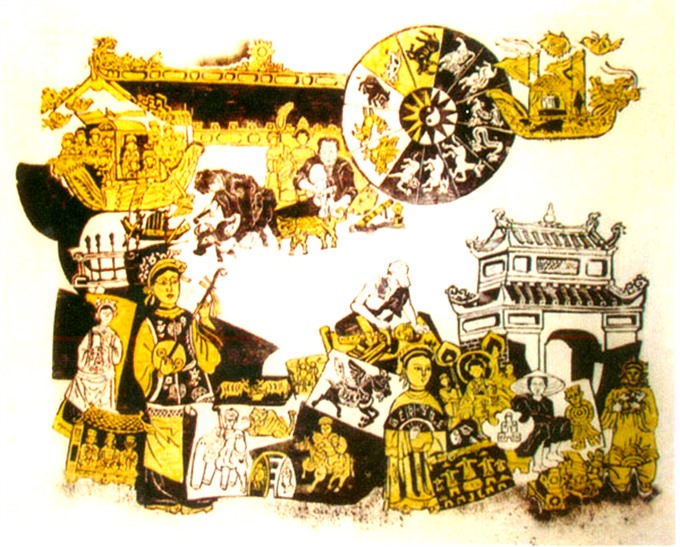 |
| Intricate: The relief The old Sình village - Huế, carved in 2008 by Đán. — VNS Photo Đoàn Tùng |
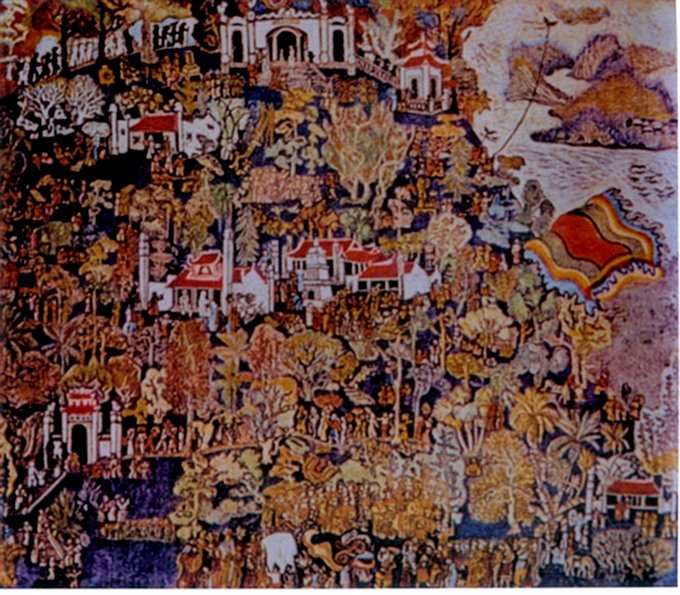 |
| Detailed: The relief Hùng king temple festival, carved in 1976. — VNS Photo Đoàn Tùng |
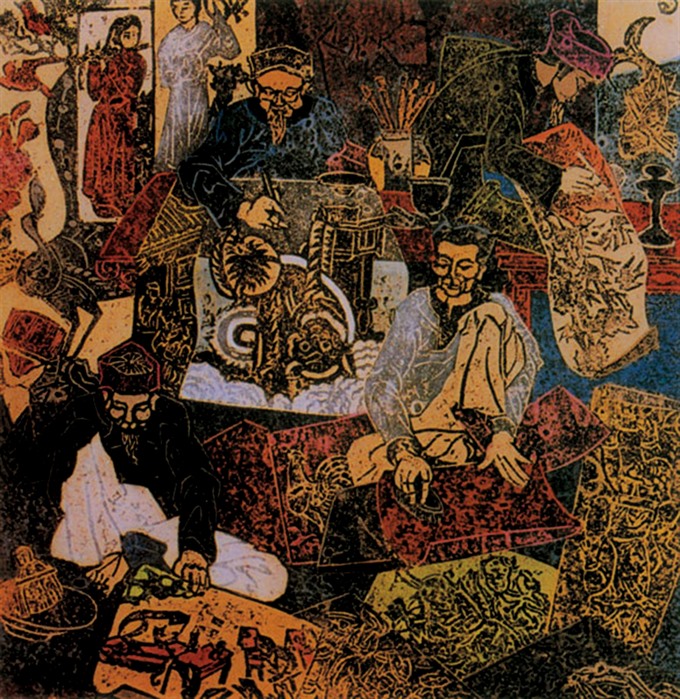 |
| Energy: The artisans of Hàng Trống painting, carved in 1976, placed in Việt Nam Fine Arts Museum. — VNS Photo Đoàn Tùng |
Other moments are quiet, gentle and nostalgic, like Quốc Tử Giám Hà Nội Mùa Thu (Temple of Literature in Autumn), Hội An Mùa Mưa (Hội An in Rainy Season), Chùa Tây Phương (The Tây Phương Pagoda), the Cầu Temple in Hội An, Thanh Toàn Bridge in Huế.
"Hội An and Huế are also two of my favourite subjects," he said.
In some other moments, viewers are able to see his cheerful mood as he chooses national cultural heritages as his subjects of interest, such as Quan Họ Singing and Pan Pipe Dancing to Look for a Soulmate. Viewers can sense every breath of life through his work, from a ploughman working hard on the field, buffaloes gnawing the grass, the paddles striking gently on the river surface, the pan pipe melody of ethnic minority people, and the sailing ships on distant seas.
Art critic Phan Cẩm Thượng, who highly appreciates Đán’s works, said, “Đán’s relief always reminds us clearly about a traditional art from the past. They remind us of solemnly Buddha sutra prints or joyous music pieces of Đông Hồ and Hàng Trống folk paintings. However, he has a unique style of modern strokes with concise and multiform lines."
Painter Hứa Thanh Bình, vice director of the HCM City Museum of Fine Arts, adds, “In the relief collection and treasures of Đán, as time goes by, his reliefs are deeper and more subtle. The way he delivers his thoughts and feelings through the carvings are more sensitive. He deserves to be the keeper of the reliefs, both traditionally and in modern times.”
Up until now, though he has won many awards, the creative energy still keeps Đán moving forward and exploring new styles in his work. “Although reliefs do not bring me much money, and are not much loved by the public, I’m really happy there are people who buy and collect my works, so this genre can be kept alive and treasured in the future.” VNS









